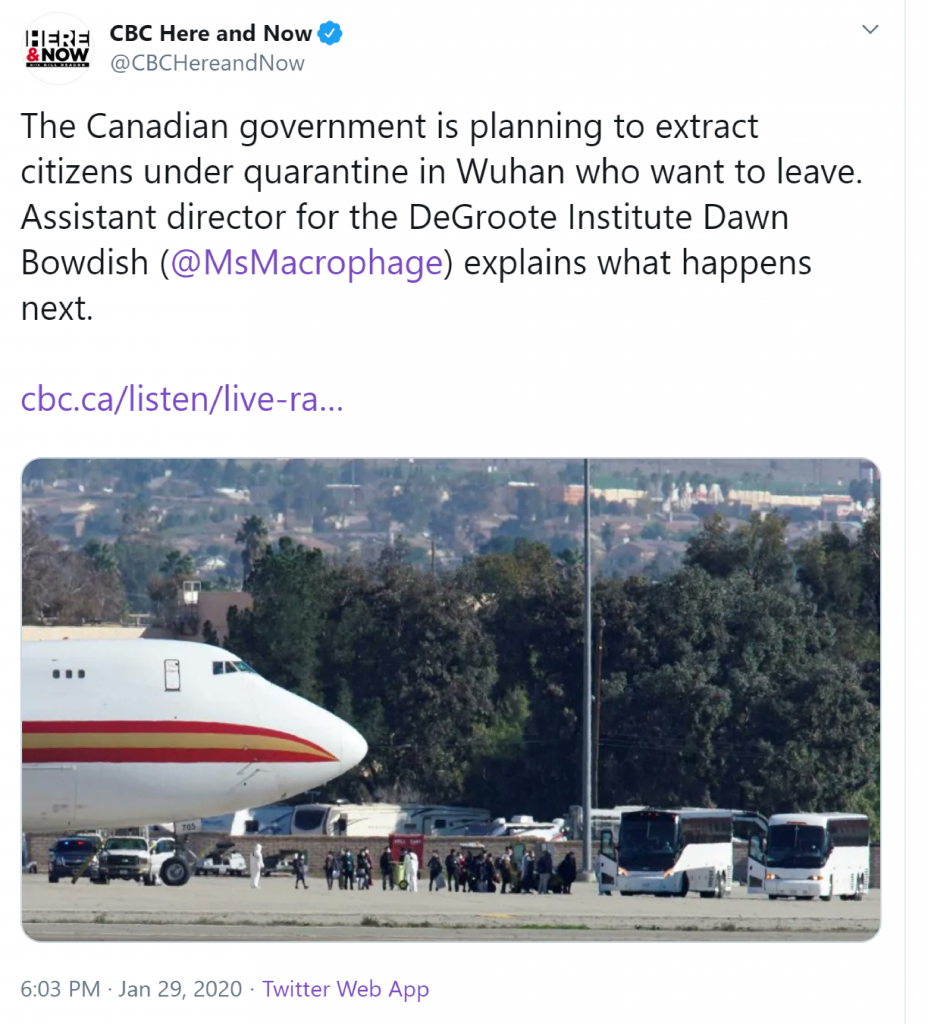Cell Systems asks group leaders how they foster mutually reinforcing research productivity and psychological safety in their teams. Dr. Bowdish and others reflect on this question here…
Tag Archives: media
SARS-CoV-2 & Back-To-School (Part 2). Ventilation & cleaning concerns
SARS-CoV-2 and Back-to-School Part 2: Transmission through air and surfaces
In Part 2 of this series we discuss the relative risk of infection through circulating air and on surfaces and some easy examples of how to break up air circulation patterns in schools.
Major points include:
1) Risks from circulating air versus surfaces
2) How masks, outside time (especially during meal time and when shouting/singing/playing music) and opening windows and doors can help reduce risk.
3) What to clean and when.
4) Beware of the break room! Occupational transmission often comes from colleagues – reduce the risk.
To download the slides, click here.
Older adults and COVID19
Older adults are some of the hardest hit by SARS-CoV2/COVI19 and they deserve our protection. Dr. Bowdish talks about the importance of keeping them safe during this epidemic.
Dr. Bowdish talks with the CBC about whether we should worry about the coronovirus.
Canada is repatriating citizens from Wuhan, China. Should we be worried that this will bring the coronovirus to Canada?
Dr. Bowdish talks to CBC about the risks of bringing Canadians home, what we can do to protect ourselves from infection, and reveals that there is a virus circulating in Canada right now with similar symptoms that has killed hundreds of Canadians and is expected to kill hundreds more (it’s influenza and you should get your flu shot).
https://www.cbc.ca/listen/live-radio/1-82-here-and-now-toronto/clip/15758125-canada-is-going-to-try-and-repatriate-citizens-stuck-in-wuhan.-what-happens-next
Bowdish lab research on the evolution of MARCO featured in the New York Times
Our research on the scavenger receptor MARCO was featured in an article “Air Pollution, Evolution, and the Fate of Billions of Humans” by Carl Zimmer in the New York Times. In this manuscript we collaborated with Dr. Brian Golding, an expert in evolutionary biology in order to understand the evolution of this macrophage receptor. MARCO (or macrophage receptor with collagenous structure) is expressed on macrophages where it binds bacteria and particles such as those found in dust and air pollution. We had hypothesized that because it is the receptor for two pathogens, Streptococcus pneumoniae and Mycobacterium tuberculosis, that have played a major part in driving human evolution, that we might find evidence of areas of the receptor that were undergoing rapid evolution to protect us from this pathogen.
In order to determine which regions of the protein were changing we performed a phylogenetic analysis of the sequence of MARCO from humans, our close ancestors, the Denisovians and Neanderthals, and primates. We found a few interesting things. There was one mutation, which we call F282S (282 refers to the 282nd amino acid in the protein, the F = phenylalanine and the S= serine), had changed very rapidly. All our primate, Denisovian and Neanderthal relatives had a serine residue in that position but fully 83% of the human genomes we analyzed had a phenylalanine. The fact that this mutation spread so quickly through the population means that there must have been very strong selection pressure. We cloned both variants and found that the human specific variant was indeed better at binding inert particles and bacteria. There were a few other interesting mutations we characterized (see article below) but the take home message is that some of the evolutionary adaptations we have made to deal with pathogens may have influenced our ability to handle air pollution or, since the savannah was predicted to be a dry and dusty place, the adaptations we’ve made to deal with particulates in the air may have changed our response to pathogens.
To read the full article, see below.
Why does the public mistrust science? Radio interview with CHML.
Dr Bowdish talks to Scott Thompson on CHML radio about a recent survey suggesting that more Canadians have lost their trust in science. Are scientists elitist? What can scientists do to regain the public’s trust ? Listen to this clip to hear more….

November is Lung Month – what do older adults need to know about pneumonia?
Dr Bowdish is the Canadian Lung Association’s spokesperson for World Pneumonia Day (November 12, 2018). Here she discusses the importance of being vaccinated for pneumonia….
She also speaks to Zoomer Magazine about pneumonia, vaccinations and the aging immune system here…
To get a sense of the other lung research going on in the Bowdish lab, see our Instagram page: house.macrophage
>
Dr. Bowdish talks to Zoomer Radio about how older adults can protect themselves from pneumonia.
It’s a very serious illness, especially for #Zoomers @libbyznaimer talks with expert @MsMacrophage Dawn Bowdish, Chair of #Aging & Immunity @McMasterU to find out everything we need to know about #Pneumonia at 12 and we take your calls as well at: 416-360-0740 or 1-866-740-4740
— Fight Back w/ Libby (@fightbacklibby) December 27, 2017
Listen to the interview here.
The Scientist: Gut Microbes Contribute to Age-Associated Inflammation in Mice.
Editorial: Breaking Down Walls: Microbiota and the Aging Gut
We’re thrilled that our publication was featured as an editorial in Cell Host & Microbe. Read Drs Erin S. Keebaugh and William W. Ja’s excellent editorial here…..

